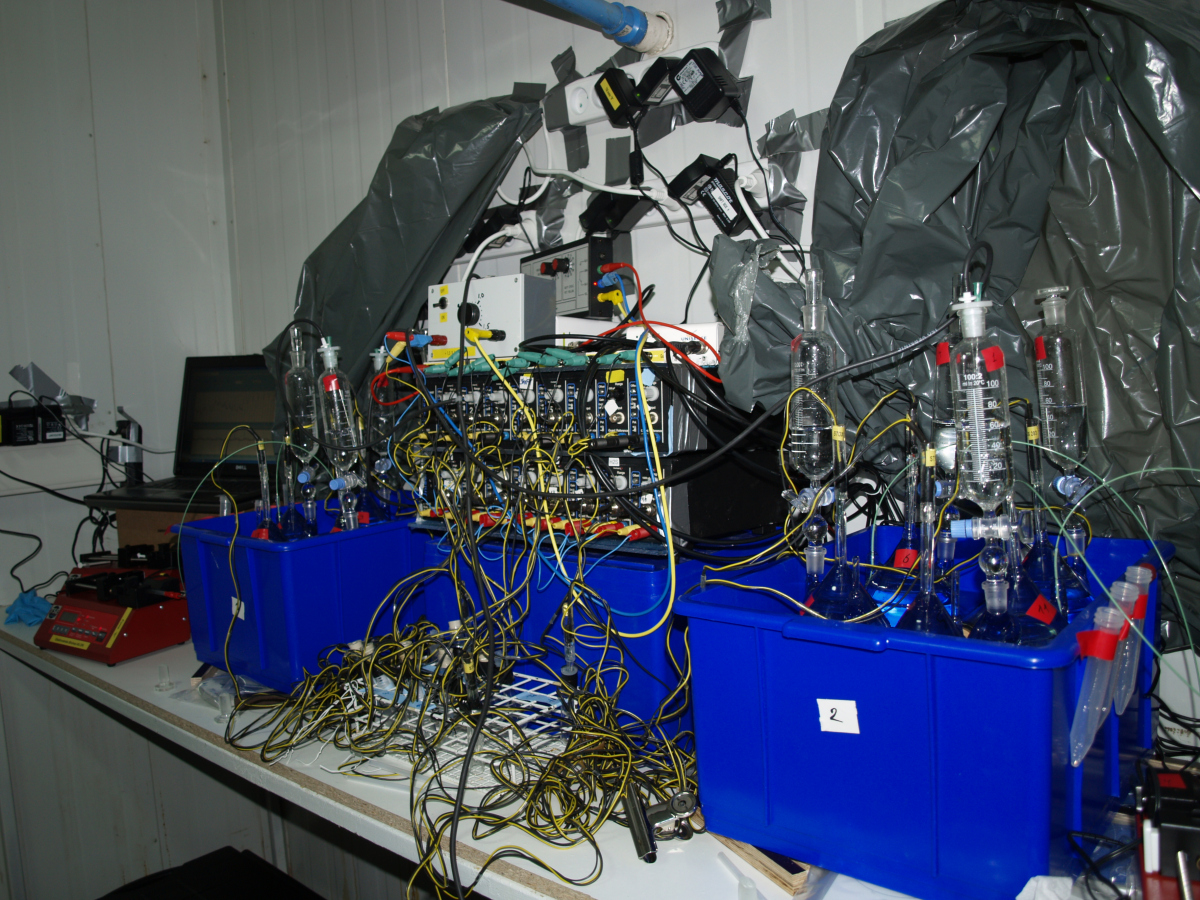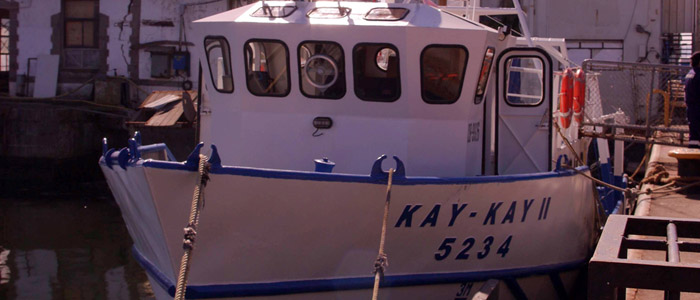Page path:
- Press Office
- Aerobic processes compete for nitrog...
Aerobic processes compete for nitrogen in oxygen minimum zones
Sep 5, 2016
An international group of researchers including Laura Bristow from the Max Planck Institute for Marine Microbiology in Bremen unveiled a surprising feature in the oceanic nitrogen cycle. The researchers were working in oxygen minimum zones (OMZs), which are hot spots in the nitrogen cycle. OMZs are areas in the ocean that contain very little or no oxygen. They are a natural phenomenon, but might be expanding due to anthropogenic influence.
Bristow and colleagues discovered that tiny amounts of oxygen are sufficient to drive processes that typically occur in more oxygenated waters. These processes are ammonium oxidation and nitrite oxidation (AmOx and NitOx). “If only a smidgen of oxygen was present, the ammonium and nitrite oxidizers instantly take advantage”, Bristow says. At the fringes of OMZs and during sporadic intrusions of oxygen, AmOx and NitOx can become very important. They are able to use the few available oxygen molecules around them and oxidize nitrogen. The microorganisms from the OMZ miss out. As a consequence, much less nitrogen is available for anaerobic processes such as anammox and denitrification.
This is important for the nitrogen cycle as, for example, anammox bacteria are very active in OMZs, where they transform nitrogen compounds to unreactive N2 gas. The ammonium and nitrite oxidizers, however, keep the nitrogen in an available form. Their activity at ultralow oxygen concentrations thus influences nitrogen cycling in the ocean, which itself has a major influence on the marine carbon cycle.
„We never had the technology before to look at AmOx and NitOx at the relevant oxygen concentrations”, says Bristow, explaining the motivation for this study. “We wanted to know how much these “aerobic” processes overlapped with “anaerobic” processes in OMZs and investigate their potential to control nitrogen loss”. Now Bristow and colleagues clearly show: AmOx und NitOx have an exceptionally high affinity for oxygen.
„Next we need to include AmOX and NitOx in our OMZ models”, Bristow looks into the future. First, the scientists want to take a closer look at the involved organisms. „I hope that more of these organisms will either be isolated, or that we can gain more data about them using molecular techniques. Both would allow us to further investigate how they function.”
„We never had the technology before to look at AmOx and NitOx at the relevant oxygen concentrations”, says Bristow, explaining the motivation for this study. “We wanted to know how much these “aerobic” processes overlapped with “anaerobic” processes in OMZs and investigate their potential to control nitrogen loss”. Now Bristow and colleagues clearly show: AmOx und NitOx have an exceptionally high affinity for oxygen.
„Next we need to include AmOX and NitOx in our OMZ models”, Bristow looks into the future. First, the scientists want to take a closer look at the involved organisms. „I hope that more of these organisms will either be isolated, or that we can gain more data about them using molecular techniques. Both would allow us to further investigate how they function.”

Original publication
Ammonium and nitrite oxidation at nanomolar oxygen concentrations in oxygen minimum zone waters. Laura A. Bristow, Tage Dalsgaard, Laura Tiano, Daniel B. Mills, Anthony Bertagnolli, Jody J. Wright, Steven J. Hallam, Osvaldo Ulloa, Donald E. Canfield, Niels Peter Revsbech and Bo Thamdrup. PNAS. DOI: 10.1073/pnas.1600359113
Participating institutes
Max Planck Institute for Marine Microbiology, Bremen, Germany
University of Southern Denmark, Odense, Denmark
Aarhus University, Aarhus, Denmark
Universidad de Concepción, Casilla, Concepción, Chile
University of British Columbia, Vancouver, Canada
Contact
Laura Bristow
[Bitte aktivieren Sie Javascript]
or the press office
Fanni Aspetsberger
Manfred Schlösser
+49 421 2028 947
[Bitte aktivieren Sie Javascript]
Ammonium and nitrite oxidation at nanomolar oxygen concentrations in oxygen minimum zone waters. Laura A. Bristow, Tage Dalsgaard, Laura Tiano, Daniel B. Mills, Anthony Bertagnolli, Jody J. Wright, Steven J. Hallam, Osvaldo Ulloa, Donald E. Canfield, Niels Peter Revsbech and Bo Thamdrup. PNAS. DOI: 10.1073/pnas.1600359113
Participating institutes
Max Planck Institute for Marine Microbiology, Bremen, Germany
University of Southern Denmark, Odense, Denmark
Aarhus University, Aarhus, Denmark
Universidad de Concepción, Casilla, Concepción, Chile
University of British Columbia, Vancouver, Canada
Contact
Laura Bristow
[Bitte aktivieren Sie Javascript]
or the press office
Fanni Aspetsberger
Manfred Schlösser
+49 421 2028 947
[Bitte aktivieren Sie Javascript]
